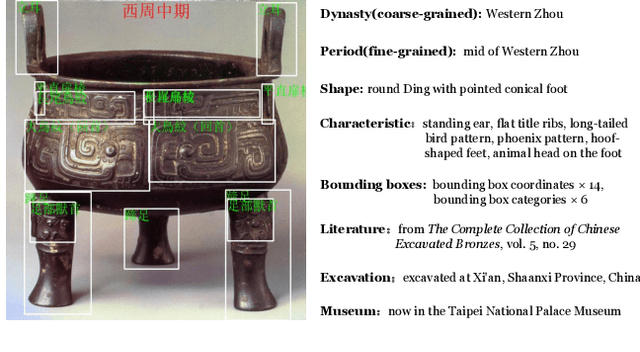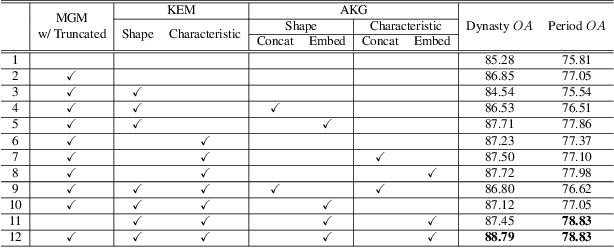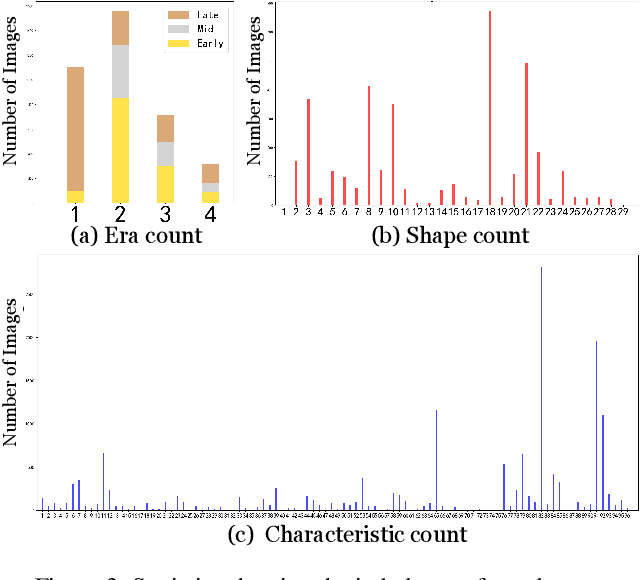Jiafu Wei
Multi-Granularity Archaeological Dating of Chinese Bronze Dings Based on a Knowledge-Guided Relation Graph
Mar 27, 2023



Abstract:The archaeological dating of bronze dings has played a critical role in the study of ancient Chinese history. Current archaeology depends on trained experts to carry out bronze dating, which is time-consuming and labor-intensive. For such dating, in this study, we propose a learning-based approach to integrate advanced deep learning techniques and archaeological knowledge. To achieve this, we first collect a large-scale image dataset of bronze dings, which contains richer attribute information than other existing fine-grained datasets. Second, we introduce a multihead classifier and a knowledge-guided relation graph to mine the relationship between attributes and the ding era. Third, we conduct comparison experiments with various existing methods, the results of which show that our dating method achieves a state-of-the-art performance. We hope that our data and applied networks will enrich fine-grained classification research relevant to other interdisciplinary areas of expertise. The dataset and source code used are included in our supplementary materials, and will be open after submission owing to the anonymity policy. Source codes and data are available at: https://github.com/zhourixin/bronze-Ding.
SpaceEditing: Integrating Human Knowledge into Deep Neural Networks via Interactive Latent Space Editing
Dec 08, 2022



Abstract:We propose an interactive editing method that allows humans to help deep neural networks (DNNs) learn a latent space more consistent with human knowledge, thereby improving classification accuracy on indistinguishable ambiguous data. Firstly, we visualize high-dimensional data features through dimensionality reduction methods and design an interactive system \textit{SpaceEditing} to display the visualized data. \textit{SpaceEditing} provides a 2D workspace based on the idea of spatial layout. In this workspace, the user can move the projection data in it according to the system guidance. Then, \textit{SpaceEditing} will find the corresponding high-dimensional features according to the projection data moved by the user, and feed the high-dimensional features back to the network for retraining, therefore achieving the purpose of interactively modifying the high-dimensional latent space for the user. Secondly, to more rationally incorporate human knowledge into the training process of neural networks, we design a new loss function that enables the network to learn user-modified information. Finally, We demonstrate how \textit{SpaceEditing} meets user needs through three case studies while evaluating our proposed new method, and the results confirm the effectiveness of our method.
 Add to Chrome
Add to Chrome Add to Firefox
Add to Firefox Add to Edge
Add to Edge